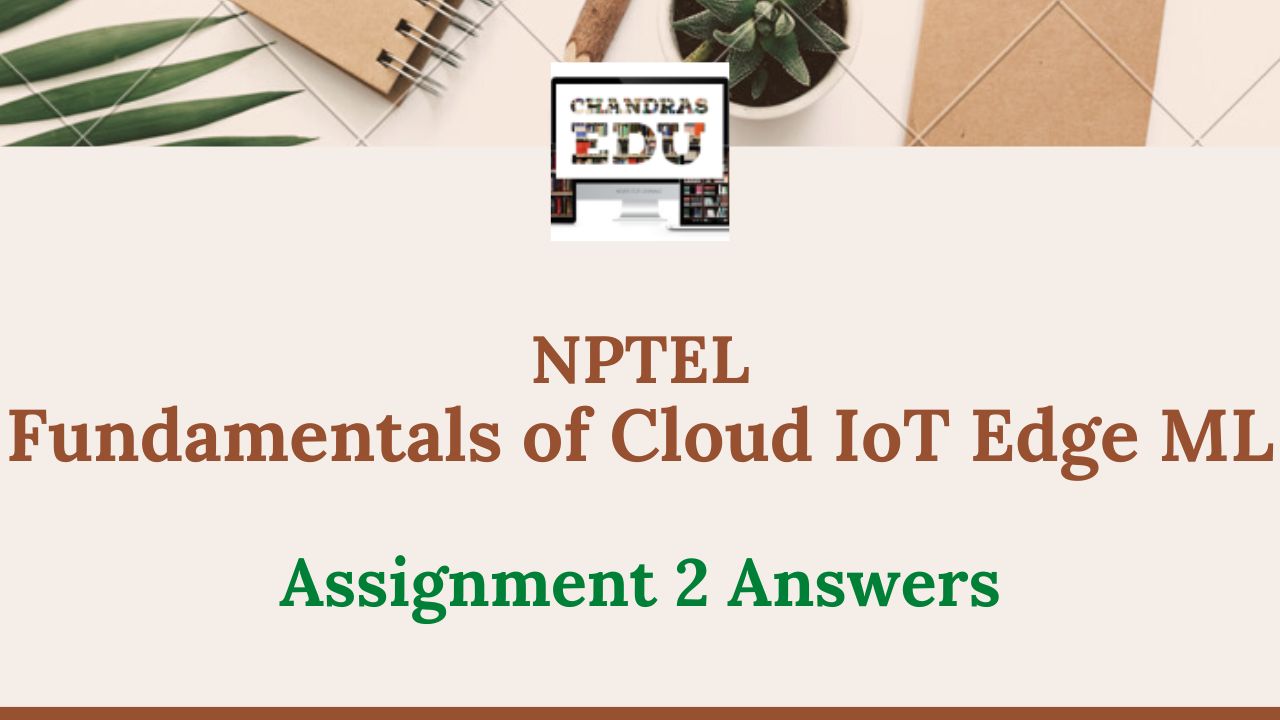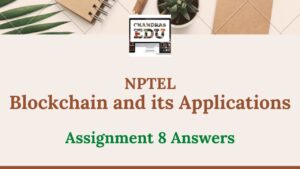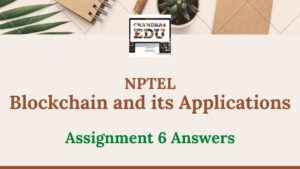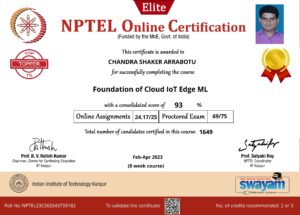| NPTEL Fundamentals of Cloud IoT Edge ML Week 2 Topics |
| Fundamentals of Cloud IoT Edge ML Assignment 2 Answers |
Directly skip to Fundamentals of Cloud IoT Edge ML Assignment 2 Answers
NPTEL Fundamentals of Cloud IoT Edge ML Week 2 Topics
The topics covered in NPTEL course – Fundamentals of Cloud IoT Edge ML Week 2 are:
- Different components of IoT platforms
- Building blocks of IoT architecture
- Prominent IoT platform service provider like Microsoft, Amazon, Google, etc
- Fundamentals of clock synchronization and the need in IoT
- Different clock synchronization algorithms
- Clocks operation in the IoT devices and how these clocks are synchronized in an accurate and efficient manner
Fundamentals of Cloud IoT Edge ML Assignment 2 Answers
1) In an IoT platform, _______ send data or events that are used to generate ______.
Things, insights
Things, actions
Insight, actions
Answer: Things, insights
2) Which azure service is used for managing devices and for putting certificates on devices?
IoT hub
IoT Central
Azure digital twin
Answer: IoT hub
Explanation:

3) __________ is data to process in real time within seconds of the happening and then it is presented to in the consumption layer.
Hot path data
Cold path data
Warm path data
Answer: Hot path data
Explanation:

4) ________ is used for batch style oriented workloads and can be used for streaming.
Event hub
Databricks
Kafka
Answer: Databricks
Explanation:

5) __________ is batch-oriented processing that processes the messages as they accumulate on the system and then on a trigger take the data that has been accumulated and process that data in batch.
Hot path
Warm path
Cold path
Answer: Cold path
Explanation:

6) Edge Computing refers to the computations that take place at the ‘inside Edge’ of the internet.
True
False
Answer: False
7) In the synchronous system model consensus is solvable whereas In the asynchronous system model consensus is impossible to solve.
True
False
Answer: True
8) In ___________, a channel acts like a set in which the sender process adds messages and the receiver process removes messages from it in a random order.
non-FIFO model
FIFO model
Answer: non-FIFO model
9) Event a has a Lamport timestamp of 4.
Event b has a Lamport timestamp of 8.
What can we tell about events a and b?
Events a and b are casually related.
Events a and b are concurrent.
Event a happened before event b.
If events a and b are casually related, then event a happened before event b.
Answer: If events a and b are casually related, then event a happened before event b.
Explanation:

10) ______ is the relative difference in clock values of two processes and _____ is the relative difference in clock frequencies (rates) of two processes.
Clock skew, Clock drift
Clock skew, timestamp
Timestamp, clock drift
Clock drift, clock skew
Answer: Clock skew, Clock drift
Explanation:

Disclaimer: Chandras EDU does not guarantee the correctness of the answers. These answers are based on the data provided by the NPTEL video lectures, are just for reference, and request students to complete the assignments independently.
If you have any suggestions, comment below or contact us at admin@chandrashaker.com
If you found this article interesting and helpful, don’t forget to share it with your friends.




Pingback: Fundamentals of Cloud IoT Edge ML Assignment 3 Answers 2023 - Chandras EDU
Pingback: Fundamentals of Cloud IoT Edge ML Assignment 4 Answers 2023 - Chandras EDU